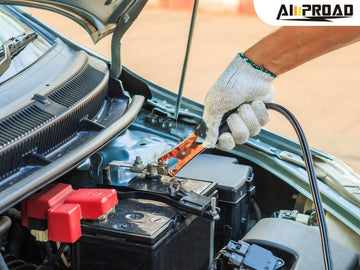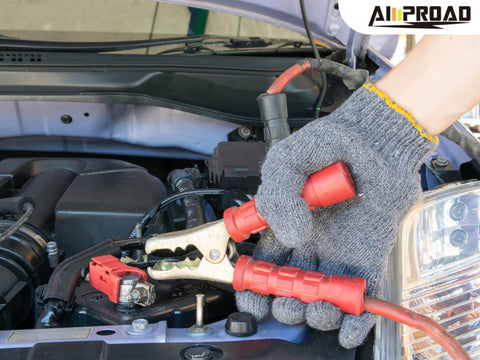
Jump-starting a car is generally safe, but improper techniques or voltage spikes can damage the alternator. This vital component powers electrical systems and charges the battery while the engine runs. Following correct jump-starting procedures helps prevent costly damage and ensures a smooth restart.
How to Safely Jump Start a Vehicle Without Damaging the Alternator?
Several factors can contribute to alternator damage during jump starting, although the process itself is generally safe when done correctly. One risk factor is the occurrence of voltage spikes, which can happen when the vehicle with the functioning battery provides too much electrical current to the dead battery. This sudden surge of power can overload the alternator and potentially cause damage to its components. Another potential cause of alternator damage is improper jump-starting techniques, such as connecting the jumper cables incorrectly or allowing the cables to touch each other, which can result in a short circuit.
Additionally, certain scenarios may increase the risk of alternator damage during jump starting. For example, attempting to jump start a vehicle with severe electrical issues or a malfunctioning alternator can exacerbate existing problems and lead to further damage. Similarly, jump starting a vehicle with an extremely depleted battery may place additional strain on the alternator, especially if the battery requires an extended period of charging to regain its charge. It's also essential to consider the condition of the jumper cables or jump starter device used for jump starting. Damaged or faulty cables can result in irregular electrical currents that may harm the alternator or other components of the vehicle's electrical system.
To minimize the risk of alternator damage during jump starting, it's crucial to follow proper jump-starting procedures carefully, including how to boost a car. This includes connecting the jumper cables correctly, ensuring a stable power supply from the functioning battery or jump starter device, and avoiding voltage spikes by regulating the flow of electrical current. By taking these precautions and being aware of potential risks, drivers can safely jump start their vehicles without risking damage to the alternator or other critical components.

What is an Alternator and its Role in Vehicle Operations?
The alternator is a critical component of a vehicle's electrical system, responsible for generating electrical power while the engine is running. Its primary role is to charge the battery and provide electricity to power various electrical components, such as lights, air conditioning, and audio systems. Essentially, the alternator ensures that the vehicle's battery remains charged and supplies a constant flow of electricity to keep the vehicle's electrical systems operational.
When the engine is running, the alternator converts mechanical energy from the engine's rotation into electrical energy. This process is achieved through electromagnetic induction, where the alternator generates alternating current (AC) that is then converted into direct current (DC) by the vehicle's electrical system. The DC power produced by the alternator is used to recharge the battery and supply power to the vehicle's electrical components. Without a properly functioning alternator, the battery would quickly drain, causing the vehicle's electrical systems to fail and potentially leaving the driver stranded. Therefore, the alternator plays a vital role in ensuring the reliable operation of a vehicle's electrical system and is essential for the vehicle's overall functionality and performance.
How Does Jump Starting Affect the Alternator?
When jump-starting a vehicle, the process involves using a jump starter or jumper cables to transfer electrical power from a functioning battery to a dead one. This surge of power helps start the engine of the vehicle with the dead battery. While jump starting is generally a safe procedure, there are concerns about its potential impact on the alternator. Some drivers worry that the sudden influx of electrical current during jump-starting could overload or damage the alternator. However, when performed correctly, jump starting should not cause any harm to the alternator.
One common misconception is that jump start a vehicle will directly charge the battery through the alternator. However, this is not the case. The alternator primarily functions when the engine is running, generating electricity to power the vehicle's electrical systems and recharge the battery. During jump-starting, the vehicle's alternator is not actively involved in the process; instead, the power comes directly from the functioning battery or the jump starter device. As a result, jump-starting does not directly affect the alternator's operation or health.
While jump-starting itself does not pose a risk to the alternator, improper jump-starting techniques or voltage spikes can potentially cause damage. For example, if the jumper cables are connected incorrectly or if there is a sudden surge of electrical current, it could potentially overload the alternator or damage the vehicle's electrical system. To minimize the risk of alternator damage during jump-starting, it's essential to follow proper jump-starting procedures, including connecting the cables correctly and ensuring a stable power supply from the functioning battery or jump starter device.

What Factors Can Lead to Alternator Damage During Jump Starting?
Several factors can contribute to alternator damage during jump starting, although the process itself is generally safe when done correctly. One risk factor is the occurrence of voltage spikes, which can occur when the vehicle with the functioning battery provides too much electrical current to the dead battery. This sudden surge of power can overload the alternator and potentially cause damage to its components. Another potential cause of alternator damage is improper jump-starting techniques, such as connecting the jumper cables incorrectly or allowing the cables to touch each other, which can result in a short circuit.
Additionally, certain scenarios may increase the risk of alternator damage during jump starting. For example, attempting to jump start a vehicle with severe electrical issues or a malfunctioning alternator can exacerbate existing problems and lead to further damage. Similarly, jump starting a vehicle with an extremely depleted battery may place additional strain on the alternator, especially if the battery requires an extended period of charging to regain its charge. It's also essential to consider the condition of the jumper cables or jump starter device used for jump starting. Damaged or faulty cables can result in irregular electrical currents that may harm the alternator or other components of the vehicle's electrical system.
To minimize the risk of alternator damage during jump starting, it's crucial to follow proper jump-starting procedures carefully. This includes connecting the jumper cables correctly, ensuring a stable power supply from the functioning battery or jump starter device, and avoiding voltage spikes by regulating the flow of electrical current. By taking these precautions and being aware of potential risks, drivers can safely jump start their vehicles without risking damage to the alternator or other critical components.
What Precautions Can Protect the Alternator During Jump Starting?
To safeguard your alternator during jump starting, it's crucial to follow proper procedures and maintain your vehicle's electrical system. Firstly, when boosting a car, ensure correct cable connections to prevent any short circuits. Make sure the positive (+) and negative (-) terminals on both batteries are properly matched, and that the cables are securely attached. Avoid allowing the cables to touch each other or any metal surfaces on the vehicle. This precaution helps prevent electrical surges that could damage the alternator or other components.
Additionally, regularly monitor your vehicle's electrical system for any signs of alternator issues. Dimming headlights, flickering dashboard lights, or strange noises could indicate potential problems with the alternator. If you notice any of these symptoms, address them promptly to prevent further damage. Conduct routine maintenance on your vehicle, including checking the battery's health and connections. Ensure the battery terminals are clean and free of corrosion, as this can affect electrical conductivity and strain the alternator.
Furthermore, it's essential to avoid prolonged jump-starting sessions, as excessive strain on the alternator can lead to damage over time. Once the vehicle has been successfully jump-started, allow it to run for a few minutes to recharge the battery fully. However, if the vehicle fails to start after several attempts, it may indicate underlying issues that require professional attention. Consider investing in high-quality car jump starter devices or cables, as they can provide a more stable power supply and minimize the risk of damage to the alternator and other electrical components. By following these precautions and maintaining your vehicle's electrical system, you can ensure a successful jump start while protecting the alternator from potential harm.
Is Jump Starting Safe for Your Alternator?
Jump starting a vehicle, when done correctly, is generally safe for the alternator. By following proper procedures, such as ensuring correct cable connections and avoiding prolonged jump-starting sessions, you can minimize the risk of damage to the alternator. However, it's essential to remain vigilant and monitor your vehicle's electrical system for any signs of alternator issues, such as dimming lights or strange noises. Promptly addressing these symptoms can prevent further damage and ensure the alternator's longevity.
When jump starting, it's advisable to use high-quality jump starter devices or cables from trusted suppliers like Amproad. These products provide a more stable power supply, reducing the risk of electrical surges that could harm the alternator. Additionally, regular maintenance of your vehicle's electrical system, including checking the battery's health and connections, is crucial for preventing alternator damage. By keeping the electrical system in good condition, you can minimize strain on the alternator and ensure reliable performance.
Jump starting is generally safe for the alternator, but it's essential to follow proper techniques and precautions to protect this critical component of your vehicle. By using high-quality jump starter devices, conducting routine maintenance, and monitoring for signs of alternator issues, you can ensure a successful jump start while preserving the longevity of your alternator. Proper care and attention to your vehicle's electrical system will help keep your alternator in optimal condition, ensuring reliable performance for years to come.


